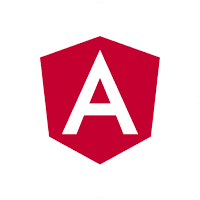Unveiling the Power of Angular: A Comprehensive Guide
Angular is a dynamic and versatile platform that has gained immense popularity among developers for creating robust web applications. In this article, we’ll take you on a journey through the world of Angular, exploring its features, benefits, and how it revolutionizes web development.
Introduction to Angular
Angular, developed by Google, is an open-source JavaScript framework that simplifies the process of building dynamic single-page applications (SPAs) and complex web interfaces. It employs a component-based architecture, allowing developers to create reusable UI components and seamlessly manage application state.
Setting Up Your Development Environment
Before diving into Angular development, you need to set up your environment. Install Node.js and npm to manage dependencies efficiently. Use Angular CLI (Command Line Interface) to create, build, and deploy Angular projects effortlessly.
The Building Blocks of Angular
Components: The Heart of Angular
At the core of Angular are components, which are the building blocks of your application’s UI. Components encapsulate the HTML, CSS, and TypeScript logic, promoting modularity and reusability.
Templates and Data Binding
Angular’s declarative templates enable you to bind data seamlessly between components and the DOM. Two-way data binding ensures that any changes in the component are reflected in the view, enhancing user interaction.
Directives: Enhancing HTML
Directives extend HTML’s capabilities by introducing custom behavior to elements. Structural directives, such as ngIf and ngFor, dynamically manipulate the DOM, while attribute directives enhance the appearance and behavior of elements.
Routing and Navigation
Angular’s robust routing module allows for efficient navigation between views within a single-page application. Configure routes, lazy-load modules, and implement guards to control access to specific routes.
Services and Dependency Injection
Services facilitate the sharing of data and functionality across components. Angular’s dependency injection mechanism ensures that components receive the services they need, promoting maintainability and testability.
Forms: Capturing User Input
Angular simplifies form handling with features like form validation, error handling, and data submission. Leverage reactive forms for complex forms and template-driven forms for simpler cases.
Working with HTTP and Observables
Interact with remote servers and APIs seamlessly using Angular’s HTTP module. Combining observables with HTTP requests enables efficient data handling and asynchronous programming.
State Management with NgRx
NgRx is a powerful state management library for Angular applications. Implementing the Redux pattern, NgRx helps manage complex application states and interactions between components.
Unit Testing and Debugging
Ensure your application’s reliability with unit tests. Angular’s testing utilities and frameworks like Jasmine and Karma make it easy to write and execute tests, catching bugs early in the development process.
Performance Optimization Techniques
Optimize your Angular app for better performance by employing lazy loading, Ahead-of-Time (AOT) compilation, and code-splitting techniques. Minimize the initial load time and improve user experience.
Angular Security Best Practices
Explore security considerations when developing Angular applications. Implement measures like data sanitization, secure communication, and proper authentication to protect your app and user data.
Progressive Web Apps (PWAs) with Angular
Learn how to transform your Angular app into a Progressive Web App (PWA). PWAs offer offline functionality, improved performance, and native-like experiences, enhancing user engagement.
Deploying Your Angular App
Deploy your Angular app to various hosting platforms, such as GitHub Pages, Netlify, or Firebase. Follow best practices for deployment, including optimizing assets, configuring routing, and ensuring security.
Future Trends and Updates in Angular
Stay informed about the latest developments in the Angular ecosystem. Regular updates and enhancements ensure that Angular remains at the forefront of web development technology.
Conclusion
Angular empowers developers to create sophisticated web applications with ease. Its component-based architecture, data binding, and extensive feature set make it a preferred choice for building modern SPAs. By following best practices and staying up-to-date with the latest trends, you can leverage Angular’s capabilities to deliver exceptional user experiences.
FAQs
- Is Angular suitable for small projects? Angular is versatile and can be used for projects of all sizes. For smaller projects, you can utilize Angular’s features that best match your requirements.
- What are Angular directives? Angular directives are markers on a DOM element that instruct Angular to attach behavior or modify the element and its children.
- How can I improve the performance of my Angular app? Consider implementing lazy loading, optimizing assets, and using AOT compilation to enhance your app’s performance.
- Is knowledge of TypeScript necessary for Angular development? Yes, Angular is primarily built using TypeScript. Familiarity with TypeScript will greatly benefit your Angular development experience.
- Where can I learn more about Angular updates and news? Stay connected with the official Angular blog and community forums to stay informed about the latest updates, trends, and best practices.

